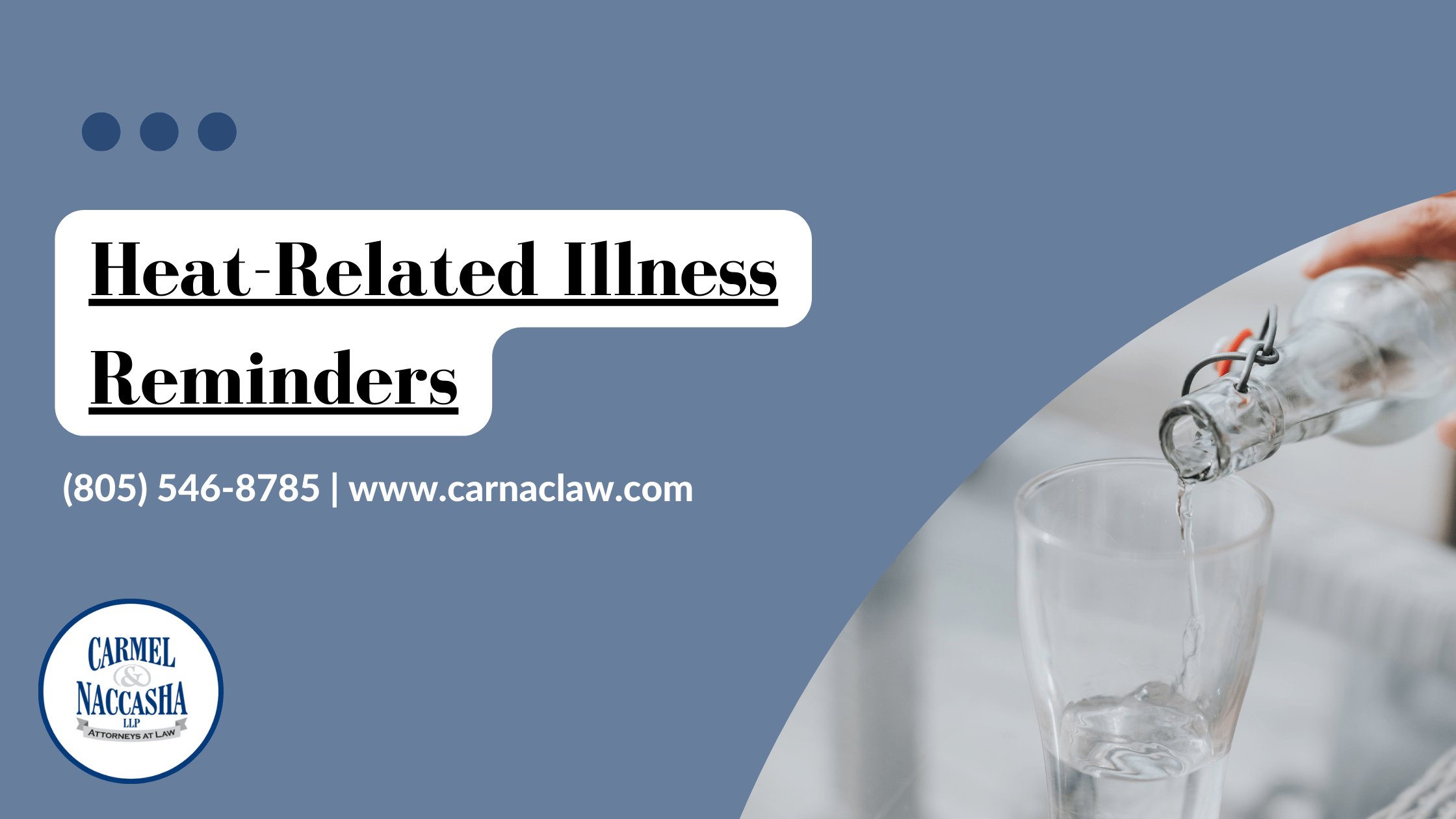Assessing your Current Heat-related Illness Policies & Procedures
Due to the COVID-19 pandemic, we have seen state and local requirements the force “indoor” businesses to move operations to outdoors where they must contend with previously never considered issues. We all know summer season can often bring the added risk and dangers of heat exposure, we wanted to provide both traditionally indoor businesses and existing outdoor businesses with some reminders regarding Cal/OSHA heat exposure guidelines. The federal Occupational Safety and Health Administration (OSHA) has recently issued a reminder to employers of their duty to protect employees, along with some guidance on ways to recognize and mitigate the risks of heat exposure. Below are some considerations to keep in mind while assessing your current heat-related illness policies and procedures.
How Hot Does it Need to Be?
Serious heat-related illnesses can occur on normal summer days, even when temperatures are not extreme. As a good rule of thumb, workers will need additional protective measures whenever the Heat Index is 80 degrees Fahrenheit or above.
It should be noted that, sports physiologists have found that temperatures as low as 65 degrees Fahrenheit could pose a risk of heat-related illnesses when the nature of the work is very heavy or strenuous. This could mean that workers, and specifically those wearing masks, could face heat-related illness risks at temperatures lower than 80 degrees Fahrenheit. Employers need to be aware of this and take immediate steps to implement Cal/OSHA required heat-related illness policies and procedures.
Employers must also keep in mind that Cal/OSHA Heat Illness Prevention Standard §3395 requires employers to implement additional high heat procedures when the temperature equals or exceeds 95 degrees Fahrenheit.
Does It Matter Whether Workers are Indoors or Outdoors?
No. OSHA’s guidance extends to any work environment that presents occupational risk factors, including heavy physical activity, warm or hot environmental conditions, lack of acclimatization, and wearing clothing that holds in body heat. OSHA also identifies a (pre-COVID) non-exclusive list of industries at risk:
Outdoors
- Agriculture
- Construction
- Landscaping
- Mail and package delivery
- Oil and gas well operations
Indoors
- Bakeries, kitchens, and laundries (sources with indoor heat-generating appliances)
- Electrical utilities (particularly boiler rooms)
- Fire Service Iron and steel mills and foundries
- Manufacturing with hot local heat sources, like furnaces (e.g., paper products or concrete)
- Warehousing (fulfillment)
We would also now include restaurants, barber shops, wineries, breweries, distilleries, or any other businesses that have moved operations outdoors as a result of COVID-19. As a guide for employers, OSHA recommends that employers utilize its
assessment tools, which are based on levels of physical activity and wet bulb globe temperature readings, to evaluate the combination of body heat and environmental heat to identify what risks their workers face for heat stress. In California, Cal/OSHA Heat Illness Prevention Standard §3395 applies to outdoor places of employment.
What Steps to Prevent Heat Exposure?
Require Training.
Employers should provide training to workers on the hazards of heat exposure and how to prevent illness. New and temporary workers are most at risk to the hazards of excessive heat. OSHA’s website offers additional guidance on building heat tolerance in its recommendations for establishing a
plan to protect new workers from heat illness.
Offer water, rest, shade, and ventilation.
Employers should provide enough fresh water and encourage workers to drink at least 1 quart of fresh water per hour, or four 8 ounce glasses of water per hour. Additionally, employers must provide access to shade and should encourage employees to take frequent rest breaks in shaded or air conditioned areas for at least 5 minutes. Employers may also consider the use cooling fans and, whenever possible, schedule work at a cooler time of the day.
OSHA has published a comprehensive
list of best practices in considering what engineering controls, work practices, and personal protective equipment should be in place. Specifically Cal/OSHA Heat Illness Prevention Standard §3395 mandates that employers provide cool drinking water free of charge, shade for employees when the outdoor temperature exceeds 80 degrees, and preventive cool-down rests that are monitored by another employee.
Create a Plan.
Employers are required to develop a plan that includes written procedures for complying with the C
Cal/OSHA Heat Illness Prevention Standard.
Implement Supervision.
As heat conditions can change rapidly, it is highly recommended that, if feasible, at least one individual at a worksite should monitor conditions and implement the employer’s heat plan throughout the workday. This individual should undergo training, be on-site with workers, and have the capacity to report to the employer any adverse heat-related conditions or signs and symptoms of heat related illness experienced by any of the workers.
Visit
Cal/OSHA for more information on required and recommended practices for managing heat exposure.
The attorney’s at Carmel & Naccasha LLP understand that creating policies and procedures can be a daunting task for small businesses, especially in these economically uncertain times. Our attorneys are ready and able to assist businesses in drafting and reviewing these types of occupational health and safety related policies and procedures.

